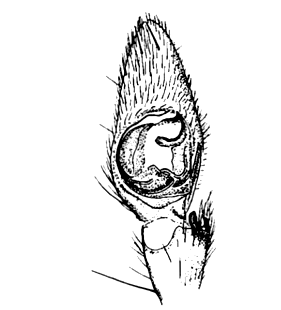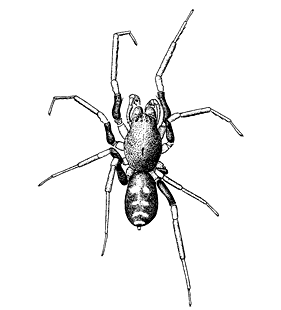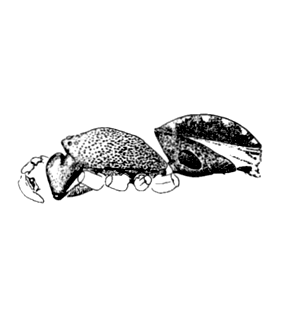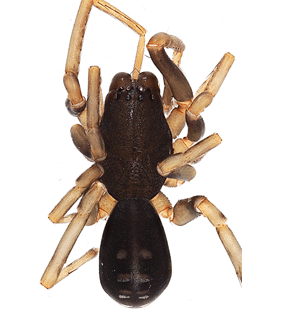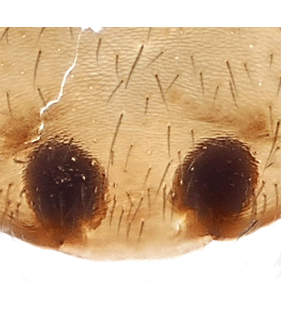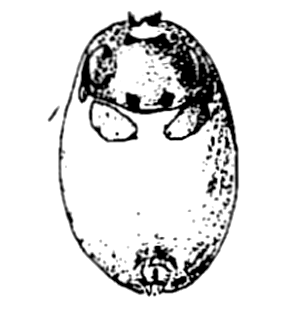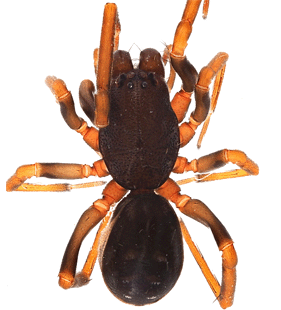Oedignatha scrobiculata Thorell, 1881
Description
Male
Pedipalp: femur arched, ventral part of tibial apophysis thumb-shaped, retrolateral part with 2 tips. Embolar base on proximal end of tegulum. Prosoma dark chestnut brown, with radiating rows of round punctuations. Prosoma length: 2.80 mm. Legs orange-brown, femora dark brown, tibia and metatarsus I middle brown and distally tinged with dark grey. Opisthosoma dark brown, shiny, with scutum, dorsum with 4 pairs of white spots.
Body length male: 4.0-5.4 mmFemale
Colouration as in males. Prosoma length: 2.40 mm. Opisthosoma with dorsal scutum, covering 7/8 of opisthosoma length, venter with an epigastric scutum.
Body length female: 4.0-5.0 mmAdditional information
Hothouse under bark.
This species of Asian origin is not native to Europe (alien species). It had been introduced to Europe at least once but could not establish so far.
Distribution
Phenology
| Jan | Feb | Mar | Apr | May | Jun | Jul | Aug | Sep | Oct | Nov | Dec |
 |  |
Figures
Distribution List
"No references" does not mean that the species does not occur in this country, but that we have not yet inserted the reference for it. We are working on it.
References
Deeleman-Reinhold C L (2001) Forest spiders of South East Asia: with a revision of the sac and ground spiders (Araneae: Clubionidae, Corinnidae, Liocranidae, Gnaphosidae, Prodidomidae and Trochanterriidae [sic]). Brill, Leiden, 591 pp. ![]()
Kielhorn K-H (2016) Beitrag zur Kenntnis der Webspinnen und Weberknechte in Berlin und Brandenburg. Märkische Entomologische Nachrichten 17(2): 261-286 ![]()
Suzuki Y, Hisasue Y (2024) Discovery of presumably introduced spiders, Oedignatha scrobiculata Thorell, 1881 (Araneae, Liocranidae) and Boagrius qiong Lin & Li, 2022 (Araneae, Palpimanidae) on Chichi-jima Island, the Ogasawara Islands, Japan. Biodiversity Data Journal 12(e121421): 1-14 ![]()
WSC (2025) World Spider Catalog. Version 26. Natural History Museum Bern, online at http://wsc.nmbe.ch (28.2.2025) doi: 10.24436/2 ![]()

